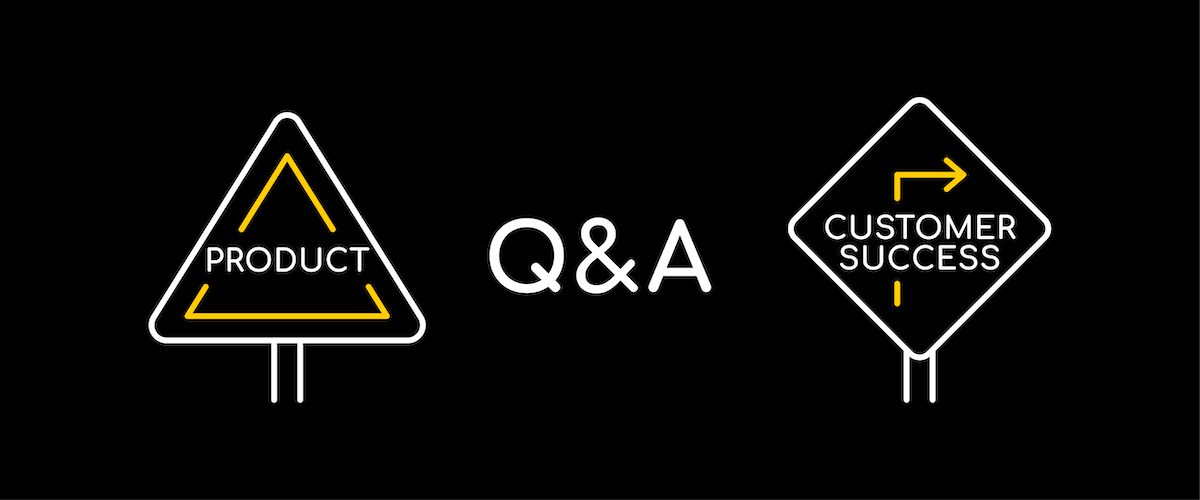The first time Jason Todd saw a demo of Directly was a “defining point in my career,” he says. That’s because, he explains, Directly helped his former employer Samsung do a complete reboot on its legacy approach to customer service – and solve real pain points including “how to scale our support and how to break away from the traditional contact center model.”
“Defining point” might be an understatement. Jason would later go on to be a Directly customer a second time, at Intuit. And in September, he joined Directly as the new leader of product and design. He has the unique perspective of now working for the company he was a customer of — twice.

His new charter — managing the product and design roadmap that’s helping businesses revolutionize customer service — has brought him full circle from where he started his career. Jason’s first tech gig was working in customer service with video pioneer TiVo. There he helped install digital video recording devices (DVRs) for some high-profile — and occasionally finicky — VIPs.
“As a 23-year-old kid, to have that visibility with some famous athletes and celebrities,” Jason says, “that was a pretty good crash course on customer care.”
While at TiVo, Jason “parlayed” the experience that came from his front-line customer-facing role into his first product management job. Since, he’s held product management roles in sports, gaming, and fintech — industries where he’s learned the importance of overall user experience, beyond just traditional customer support.
We recently sat down with Jason to talk about his experience in customer care, his impressions of Directly as a customer, and his vision for the future of Directly’s intelligent automation platform:
Tell me about your path into tech and product management?
I kind of fell into it. I studied aviation operations in college and had been flying planes since I was 14. But two weeks into college, 9/11 happened. I knew at that moment that aviation wasn’t going to be my path. I was lucky to get a job at TiVo out of college, installing TiVo products for VIPs, Nobel Prize winners, athletes, C-levels — and even a future president. I took that experience of getting to know a product and parlayed it into a product management role. At TiVo, I managed product for the accessories business, including working on TiVo’s iconic remote control. It was a great way to start my career.
If you had to explain what you do at Directly to a kindergarten class, what would you say?
The easiest way to summarize it is that we exist to help companies serve customers better. Everyone wants a great experience, no matter what they are doing — whether it’s eating at a restaurant or being able to easily buy or returning something online. We help companies give people what they want and make them happier. And happy customers are more loyal — and more likely to tell their friends and family about their good experiences. That last part may be one step above kindergarten level, but that’s really what we’re about.
So have you told your two kids (ages 4 and 6) that?
Yes. And it resonates. They understand how it’s important to treat people well and make them happy. And when you think about it, making people happy is really our most fundamental goal.
You had the unique opportunity to be a Directly customer at Samsung and Intuit. Now you’re running the product and design team. What did you learn as a customer that will serve you well in your role?
I was a huge fan of Directly from the very start. And at Samsung, we were struggling with some core challenges in customer care, challenges a lot of companies face. Things like how to scale our support, how to break away from the traditional contact center model — and how to get out of a transactional model and instead focus on customer success. There was a lot of contention. When we sat down with Jeff (Patterson) and Antony (Brydon), they were able to explain how Directly could solve those problems at scale.
What was the big difference between what you saw from Directly and other customer care solutions?
The expert community. The basic hypothesis was that people who used our devices were far more adept at providing support for our products than our call center agents, most of whom didn’t have the $1,000 dollar Samsung phones we were supporting. And when we rolled it out, those experts blew our agents out of the water in every measurable metric. Samsung has really bought into the expert-led model. And now with automation through AI, Directly is not only able to help provide better answers from experts, but also respond instantly at any scale.
Tell me a little more about the specific problems you were trying to solve with Directly?
One of the biggest challenges was scaling during peak seasons. For Samsung, peak was during the typical holiday season and for Intuit, that meant additional support for businesses closing fiscal quarters and individuals filing taxes in April. When you mix in an almost 100% annual turnover of call center agents, a general lack of expertise of those agents, and all the variations of content and answers needed to support a wide variety of customers — we simply weren’t able to deliver support to match what our customers were expecting or deserved. Especially during those peak seasons.
Do you recall your first impressions of Directly, the first time you got a demo?
Looking back, it was such a defining point in my career. Being at Samsung, I saw a lot of pitches from vendors about how they were going to “change the world.” They rarely panned out. Directly was one of the few demos where I saw a path almost instantaneously, and could understand how it could actually solve our problems. And it wasn’t just incrementally improving how we managed our challenges — Directly added a whole layer of innovation to our operations, which was traditionally pretty stale when it came to technology. The Directly team also made it incredibly easy to work with them — they were more like partners than just another solution.
Looking back, what were the biggest benefits to being a Directly customer — maybe even things you didn’t expect?
In customer care, a lot of the conversations are about cost-cutting — and certainly, it helped us manage our costs. But one of the most interesting benefits I saw at Samsung was how Directly incentivized some of our most loyal customers to become more active, and it had this network-building effect. Our experts became evangelists and this created a larger network of brand ambassadors. I thought this might happen, and it proved true.
Another thing, and I didn’t realize this until after Samsung, is that with the combination of AI and experts, Directly can serve other types of functions — beyond customer support. We can help companies improve the customer experience lifecycle, from pre-sales to sales and marketing and beyond. You can deploy a layer of domain expertise within any function, and provide many types of great service. What we call “customer experience,” or CX, includes a massive opportunity beyond just customer support.
What do you think are the biggest barriers for companies making the leap to an AI-powered customer support solution like Directly?
The biggest barrier by far is the amount of misinformation about AI. There’s an expectation that you can throw a lot of data at a supercomputer and it will give you everything you need to deliver a fantastic chatbot experience. It doesn’t work that way today, nor will it anytime soon. Some companies are spending a lot of money at tech-only solutions to automate support, but those solutions are failing at customer experience. What’s unique about Directly is how it delivers what you think it will — and it’s because of the experts in the loop.
What’s one myth about AI you’d like to dispel?
Machines are not going to imminently take over our lives. AI is still not as capable as you see in movies and on TV. There’s still a lot of human intervention required to make them useful — and that will be the case for years to come.
We’ve all had bad experiences with customer support. Why did you want to work at a company that’s in that space?
When I first moved into customer care at Samsung, I definitely had the thought, “I have enough problems — I don’t need to hear customers complain all day.” But I realized, from a product management perspective, that customer care and customer success is a greenfield opportunity. Historically, customer support has been run by operations. But that’s shifting at top companies, as they are realizing the importance of customer experience — beyond just buying products. What motivates me no matter where I sit is creating great customer experiences.
What’s the one thing that’s most exciting to you about your role?
The pace. Jeff (Patterson) asked me to build a roadmap for the company in my first three weeks on the job. And we started executing within a week of having the roadmap. The pace and lack of organizational barriers are exciting — and the decision-making process is so much faster than with larger companies.
Speaking of fast, things change quickly in this space. But for your role over the next few years, what does success look like?
I’ve seen this massive shift beginning where organizations that have been fixated on “customer care” and managing costs are changing to a “customer success” mindset. Those in the industry are learning that there’s so much more opportunity than simply resolving cases and closing tickets. Over time, customer success will start being recognized as a key to top-line growth, and there will be more focus on metrics like retention and lifetime value. As a brand, the services and products you offer can quickly become commodities — but how you engage with and treat your customers will drive loyalty. As an industry, I think we’re just starting that journey — and that’s a journey I think we at Directly can help lead.
Troy Petersen is an editorial consultant for Directly.
